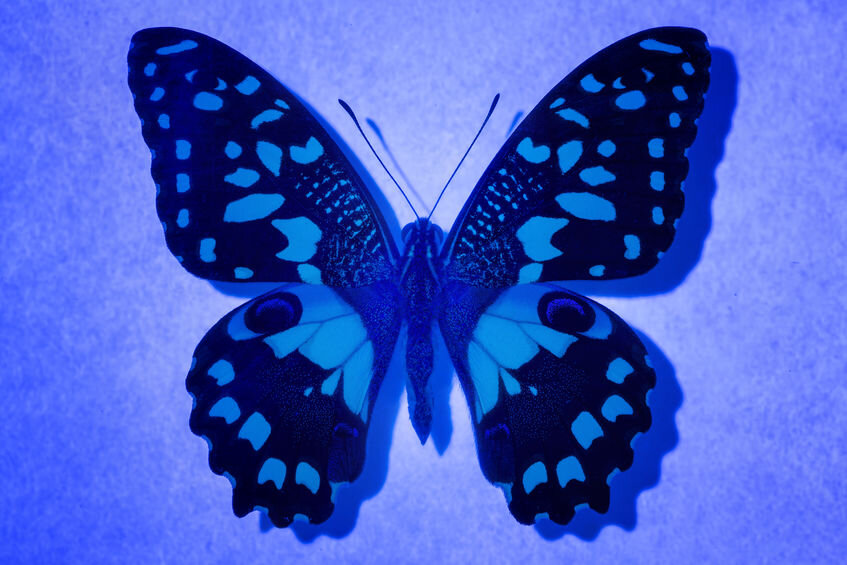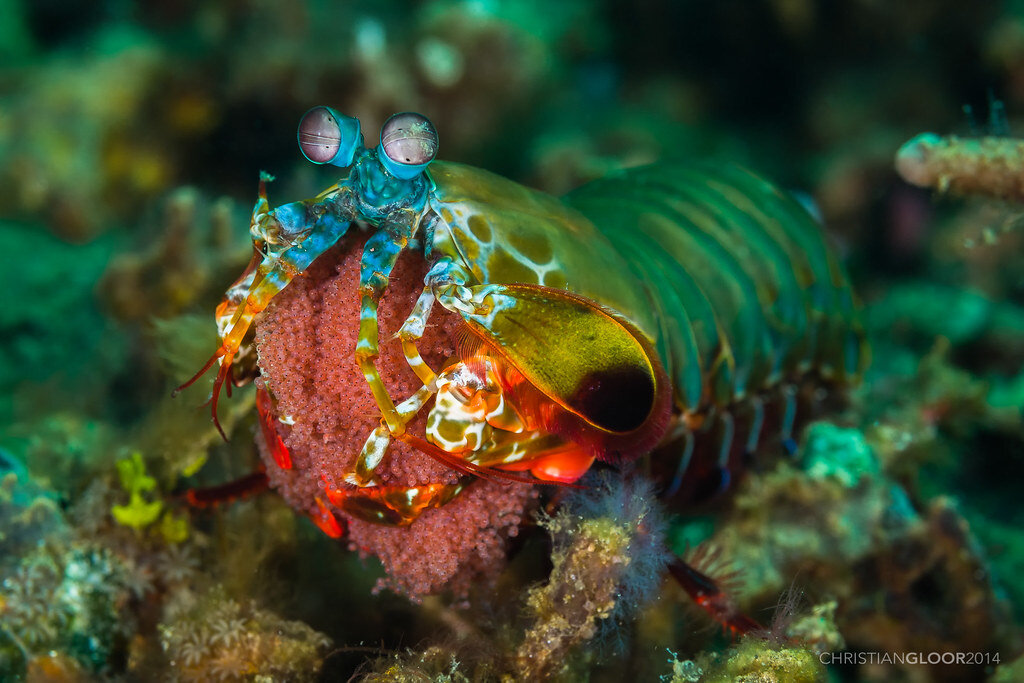10 Interesting Facts About Bioluminescence
Bioluminescence is the phenomenon of light emission by a living organism which is usually created by some form of a chemical reaction. Bioluminescence is rather common in marine wildlife such as jellyfish and is also very prominent in other animals as well such as fireflies.
Here are 10 interesting facts about bioluminescence.
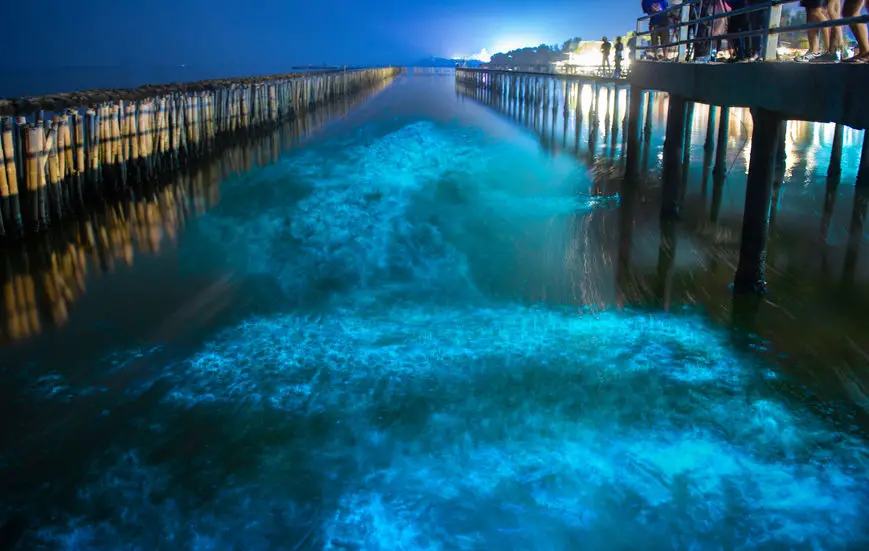
Contents
About 76% Of Marine Life Is Bioluminescent
As research has shown it turns out that a large majority of 76% of all marine life is bioluminescent.
This means that about ¾ of ocean creatures possess some sort of glowing ability, granted some are more apparent than others.
This number includes all groups of sea creatures, ranging from creatures as small as plankton all the way up to sharks and whales.
Humans Are Bioluminescent
While this is rather unexpected it turns out that through some research scientists have managed to conclude that humans actually are bioluminescent. However not exactly in the more conventional way that is usually present among other animals.
The bioluminescence among humans is rather subtle in comparison to other animals. In fact you would need a superhuman level of vision in order to spot this since it is usually not visible to the naked eye.
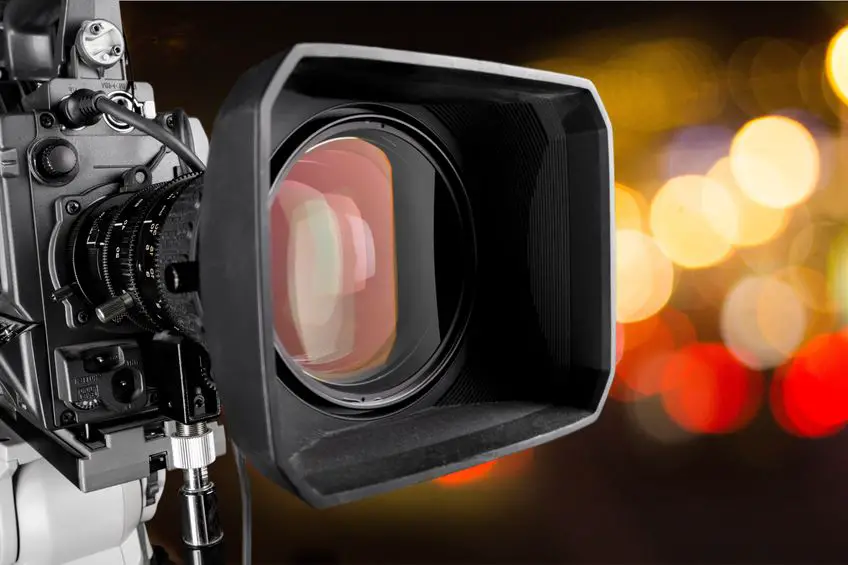
The only reason we know of this information in the first place is that when scientists were experimenting with it they had to use an incredibly sensitive camera in order to capture an image of it.
One additional interesting thing about this fact is that it was before this thought that it was impossible to capture an image like this.
It was thought that it was impossible to take a picture of something so minuscule that we were not even sure existed.
However, they managed to do it with the help of a CCD (charge-coupled device) camera. This is a camera that is sensitive to photon particles, which are the particles of light. Using a sensitive camera of this type they managed to capture the small amount of light humans emit.
There Are No Bioluminescent Animals In Freshwater
As it turns out through studying different marine creatures, scientists have been able to come to the conclusion that there are virtually no naturally bioluminescent animals in freshwater.

While we know this piece of information, we don’t know yet why it is this way.
Since bioluminescence in itself comes from varying sorts of chemical reactions, it is speculated that the reason this could be is that the salt in the oceans could be a vital component for the reaction to take place.
There is no conclusive evidence on this though. One reason being is that it is difficult to conclude what the reason might be since there are no natural animals to study this on.
Bioluminescence is Very Versatile Among Animals
The fact that bioluminescence has important functions for sea creatures is rather apparent without scientifical studies however we have discovered that the animals with this ability have figured out a handful of creative ways to use it to their advantage.

One of the most iconic and recognizable of these is demonstrated well by the anglerfish, especially in Disney’s Finding Nemo.
While the anglerfish does make use of its bioluminescent ability in the way it was intended, this is not close to being the only application that marine life uses its bioluminescent abilities.
For example, certain animals use it for defensive purposes. Similarly to how a squid would shoot out ink in order to evade a predator, there are animals who use similar tactics but use their bioluminescence instead of ink.
This proves to be rather effective since most creatures (humans included) are drawn to light and things that are bright, especially in the darkness of the ocean.
The human equivalent of this is driving when it is really dark outside. When another car is approaching you and about to move past you in the opposite direction you have to make a conscious effort to look away from the headlights of the other car.
One reason for this is that most headlights are rather strong making it hard to not be affected by them but mainly because most living creatures are simply drawn to light.
Using this concept it is easy to understand how bioluminescence can be used to draw a predators attention. The ocean can be a very dark place, making any light that does exist down there stand out substantially more than it would in any other place
Different Colours Of Bioluminescence
You might have seen this in actual effect, such as how some jellyfish will glow purple whereas a firefly glow with a brighter green.
This is because of the chemical reaction that causes the glow to begin with. The reaction contains the chemicals luciferin and luciferase and comes in different colours depending on the location of the reaction as well as the actual balance of the chemicals.
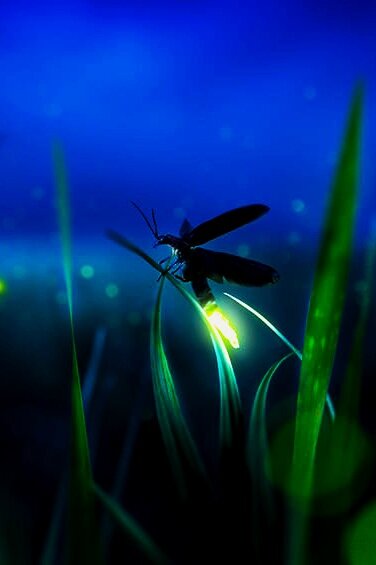
The most common colours you will see of this however are green and blue. When it comes to land creatures it is most common to see green types of glow, with great examples of this being fireflies and beetles.
There are cases where it goes yellow and even red but it is not nearly as common as creatures with a green glow.
When it comes to ocean animals though, the majority of green and blue glow actually has a very solid scientific reason behind it. This reason being that red light simply doesn’t travel far through light.
This is because red light is the least energetic light from our visible spectrum, which causes it to lose its effect further down the ocean you go.
This can be visualised by shooting 2 bullets into water. The one with the more powerful shot is more likely to reach further into the ocean if the bullets are the same. For a more detailed explanation of this, you can check out our article on Why Colours Change Underwater here.
That being said though, the deeper you go into the ocean the less red you see in general. With that in mind, it also makes sense why ocean creatures naturally glow in blue or green, because that is quite literally the only colour that becomes visible when you are at greater depths.
Bioluminescence Is Caused By Disturbance
What we mean by this is that the bioluminescent glow can be triggered by different forms of disturbance. One given example of this is for example how some algae glow due to a sudden difference in the water’s salt level.
There Are Bioluminescent Mushrooms
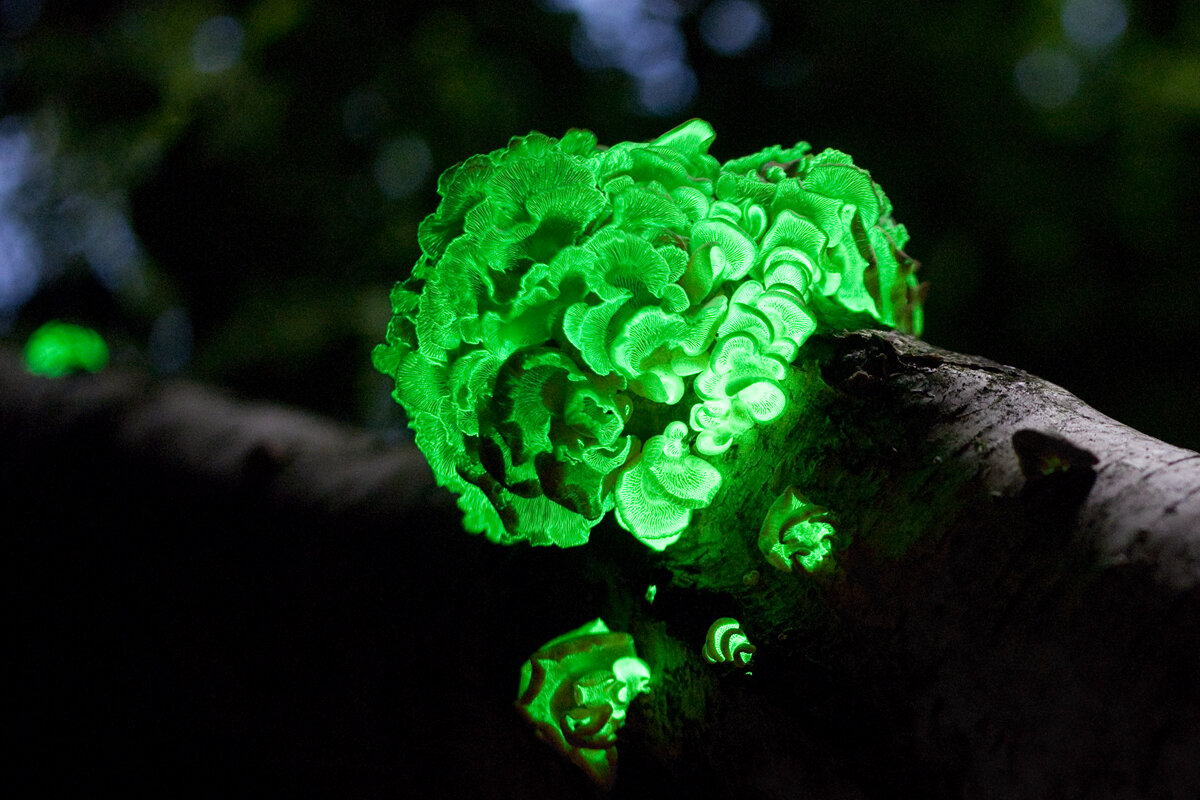
While most things bioluminescent include different animals, there has also been plenty of documentation made for mushrooms that glow using this phenomenon.
For a long time, it has been a question about how exactly a mushroom could produce light on its own in this fashion. However, the reason for this is rather simple.
It turns out that they actually make use of the same chemicals that most animals do for their glow, which would be luciferin and luciferase.
Even though we know of this, our knowledge of the subject is rather limited. We don’t know exactly everything about it. There are some bits of information we have observed though, such as that one main reason for glowing is to attract insects that can potentially spread their spores.
It is definitely an interesting subject to dive into but at this moment in time, we simply don’t know enough about it.
There Is Uncertainty About The Bioluminescence In Animals
While we have figured out a lot about nature through experimentation and observation there are several areas in which we simply have no proven answers, this being no different.
While we mentioned the different usages some animals have for bioluminescence, there are some animals that simply don’t have an obvious use for it.
For example earthworms. A majority of them glow due to bioluminescence but at this moment in time, we see no reasonable reason for them to do so. Many aspects of nature don’t evolve the way they do by pure accident, there is usually a reason behind functions like these.
It is very possible that we simply just haven’t figured it out yet, but at the moment we are slightly clueless as to what its purpose is.
Bioluminescence Is A “Cold Light”

What this essentially means is that the light that gets generated through this chemical process doesn’t carry much heat.
The definition of cold light in itself is that a light source’s energy radiation is less than 20% thermal radiation, or in other words heat. This also means that more than 80% of its energy radiation should be visible light.
When comparing this to actual manmade light sources these numbers are actually rather impressive.
The regular incandescent bulb produces about 95% heat and only 5% light, to put into perspective how impressive less than 20% heat is.
We have however achieved these numbers as well with man-made light sources, but it is fascinating how nature is able to do this incredible feat without any sort of conscious input.
Bioluminescence Used As Camouflage
This might seem insane to think about, but in reality, it is actually quite simple if you understand the main principle.
So at this point, you might ask yourself how on earth some animals manage to hide by using a form of glowing ability. The reason has to do with how the sun interacts with water.

Imagine this; You are swimming about 2-3 meters under the surface of the water and look up. The way it looks down there it sort of looks like the water at the very surface is sort of glowing because of the sunlight, right? It is exactly this principle that marine life use for their camouflage.
What they would do is simply go close to the surface and start glowing. Normally this would create a sort of shadow or at least a noticeable disturbance in the lighting.
However, since they also glow they are able to “cover-up” their shadow by simply glowing as strong as the light they are blocking out is.

